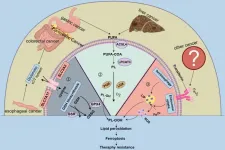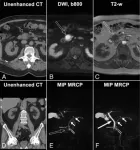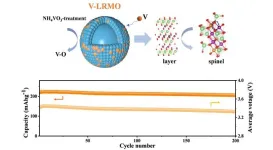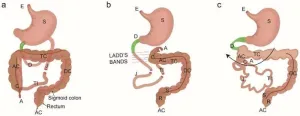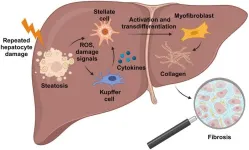(Press-News.org) The University of Cincinnati’s Yasmin Aziz, MD, and Joseph Broderick, MD, coauthored an editorial published Nov. 7 in the journal Neurology analyzing the current use and potential future of alternatives to traditional informed consent in acute stroke trials.
Patient informed consent is a crucial part of ethical clinical trial design and implementation, but time is of the essence for stroke trials. Approximately 2 million neurons die each minute they are deprived of oxygen, and patients are also sometimes incapacitated and therefore unable to consent to a trial, highlighting the need for emergency consent in certain cases.
There is currently no worldwide standard for emergency consent for stroke trials, with various approaches taken by different countries.
“This editorial is intended to educate the greater neurology community about these consent procedures and their current relevance to stroke research in particular,” said Aziz, assistant professor in the Department of Neurology and Rehabilitation Medicine in UC’s College of Medicine and a UC Health physician.
Broderick is principal investigator of the FASTEST trial, the first acute stroke trial in the United States to use exception from informed consent (EFIC) protocols.
“...Community consultation and public disclosure are unique to EFIC,” the authors wrote. “Both requirements can be quite expensive and time-consuming, delaying study start-up. Efforts to make EFIC more efficient and less costly in the US are ongoing.”
The coauthors noted as the field continues to explore the most effective and efficient alternatives to prospective informed consent, the “principles of patient autonomy and beneficence remain imperative.” Aziz said improving consent procedures is an opportunity to “keep moving the chains forward” for stroke research.
“The United States in particular has a very dark, very recent, unethical history with certain populations and the performance of clinical research,” she said. “We need to find the best way to honor patient autonomy while moving research forward to ultimately get better treatments to the bedside.”
END
University of Cincinnati researchers pen editorial analyzing present, future of emergency consent in stroke trials
2024-11-08
ELSE PRESS RELEASES FROM THIS DATE:
Scarlet Macaw parents ‘play favorites,’ purposefully neglect younger chicks
2024-11-08
Scarlet macaws are a symbol of fidelity and virtue to many people because they are thought to mate for life — but it turns out that they also “play favorites” when feeding their young, making them excellent mates, but neglectful parents.
Fortunately, Texas A&M scientists have developed a way to ensure the birds’ bad parenting results in fewer chick deaths.
Researchers at the College of Veterinary Medicine and Biomedical Sciences have discovered that scarlet macaws purposefully neglect feeding the youngest chicks ...
One gene provides diagnoses for 30 patients whose condition was unexplained for years
2024-11-08
An international team of researchers has provided a genetic diagnosis for 30 individuals whose condition was undiagnosed for years despite extensive clinical or genetic testing. The study, conducted by researchers at Baylor College of Medicine, National University of Singapore and collaborating institutions worldwide, appeared in Genetics in Medicine, the official journal of the American College of Medical Genetics and Genomics.
“The story of our findings began with one patient I saw in the clinic presenting an uncommon combination of problems,” said first and co-corresponding ...
Current practice and emerging endoscopic technology in the diagnosis of colorectal cancer
2024-11-08
The evolution of gastrointestinal (GI) endoscopy has transformed CRC diagnostics since its early 20th-century origins. Initial rigid endoscopes provided limited visualization, were highly uncomfortable for patients, and only partially visualized the colon. With the introduction of fiber-optic technology in the 1950s, endoscopy began transmitting real-time images, greatly enhancing diagnostic applications for GI conditions. Today, CRC remains a primary target for endoscopic screening due to its high prevalence as the second leading cause of cancer ...
Decoding 17-beta-hydroxysteroid dehydrogenase 13: A multifaceted perspective on its role in hepatic steatosis and associated disorders
2024-11-08
Chronic liver disease (CLD) is a growing global health challenge, accounting for millions of deaths each year. Its major contributors include metabolic dysfunction-associated steatohepatitis (MASH), alcoholic liver disease (ALD), and hepatitis C virus infection. These conditions are closely tied to hepatic steatosis, a condition characterized by the abnormal accumulation of fat in the liver. Recent genome-wide association studies have identified the 17-beta-hydroxysteroid dehydrogenase 13 (HSD17B13) gene and its loss-of-function variant ...
Key pathway leading to neurodegeneration in early stages of ALS identified
2024-11-08
Approximately 5,000 people in the U.S. develop amyotrophic lateral sclerosis (ALS) each year. On average, they survive for only two to five years after being diagnosed, according to the Centers for Disease Control and Prevention. The rapidly progressing neurodegenerative disease causes the death of neurons in the brain and spinal cord, resulting in muscle weakness, respiratory failure and dementia. Despite the devastating nature of the disease, little is known about what first triggers the deterioration of motor neurons at the onset of ALS.
Now, researchers from University of California San Diego and their colleagues ...
Ferroptosis in regulating treatment tolerance of digestive system tumors
2024-11-08
The global burden of digestive tract tumors is profound, with these cancers accounting for nearly half of all malignant tumors worldwide. Despite advancements in endoscopic diagnostic methods, which enable earlier detection and treatment, a large portion of patients still receive diagnoses at later stages. For these patients, chemotherapy, radiation, and immunotherapies are often the only viable options, yet resistance to treatment remains common, leading to high recurrence and mortality rates. Research increasingly shows that ferroptosis may be a key mechanism to reverse treatment tolerance. Ferroptosis, characterized by ...
A promising future in pancreatic incidentaloma detection
2024-11-08
In recent research published in eGastroenterology, Dr. J-Matthias Löhr and colleagues provide an in-depth review of diagnostic methods for pancreatic incidentaloma—incidental findings often detected during imaging scans intended for other conditions. These pancreatic lesions, which vary in severity, can occasionally signal pancreatic cancer in its earliest stages. However, traditional methods, including MRI and CT scans, are limited by invasiveness, cost, and variable sensitivity to early pancreatic changes.
The research highlights ...
Stabilizing lithium-ion batteries: The vanadium touch
2024-11-08
As demand surges for electric vehicles and energy storage systems, lithium-ion batteries need to deliver higher energy densities at lower costs. While conventional cathode materials like LiFePO4 and Li-Ni-Co-Mn-O are widely used, they often fail to balance performance with affordability. Lithium-rich manganese oxides (LRMOs) have emerged as a potential alternative due to their high capacity and cobalt-free composition. However, their low initial Coulombic efficiency and rapid voltage decay have limited their broader application. Addressing these challenges requires deeper research to stabilize LRMOs for widespread commercial use.
In September, 2024, a team from Guangdong University of Technology, ...
Innovative approaches to the surgical challenges in the management of gastroschisis
2024-11-08
Gastroschisis, a congenital abdominal wall defect, has transformed from a uniformly fatal condition to one with a 95% survival rate through surgical advancements over the past six decades. The primary goal of managing gastroschisis is to mitigate fetal and postnatal risks, including damage from herniated bowel loops and ensuring effective decompression of the gastrointestinal tract during recovery. This review focuses on both preventative and corrective aspects of gastroschisis management, highlighting innovations in neonatal surgery that improve quality of life and long-term health outcomes.
Definition ...
Mouse models for the study of liver fibrosis regression in vivo and ex vivo
2024-11-08
Liver fibrosis is a progressive and potentially reversible condition that results from chronic liver damage, which can be caused by a variety of factors, including metabolic dysfunction-associated steatotic liver disease (MASLD), alcohol abuse, and viral hepatitis. MASLD affects a significant portion of the global population and can progress to metabolic dysfunction-associated steatohepatitis (MASH), leading to liver cirrhosis if left untreated. Given the prevalence of MASLD and its related conditions, the study of fibrosis and its regression ...




